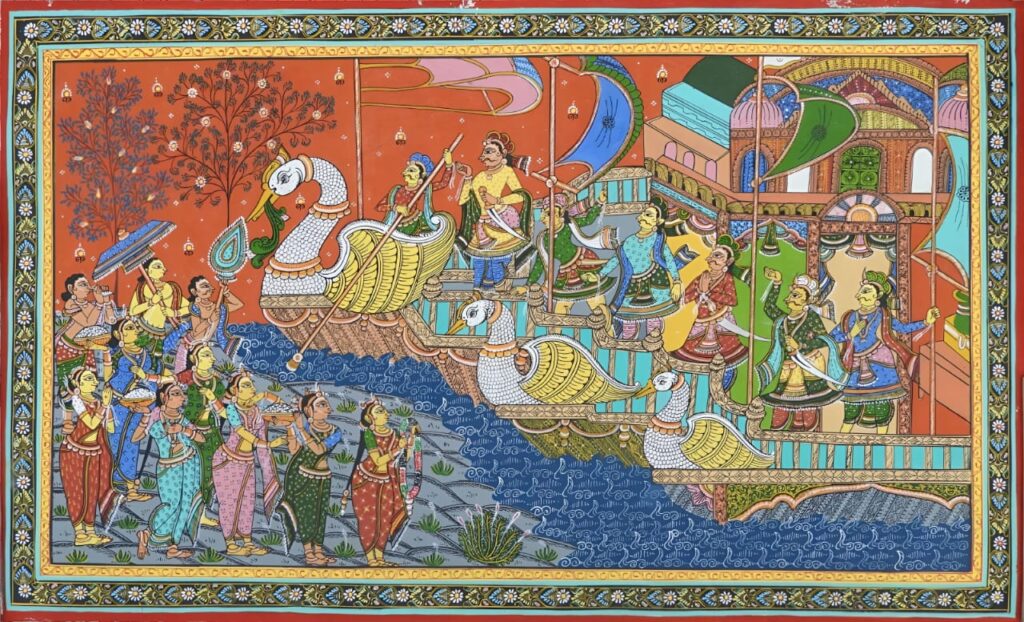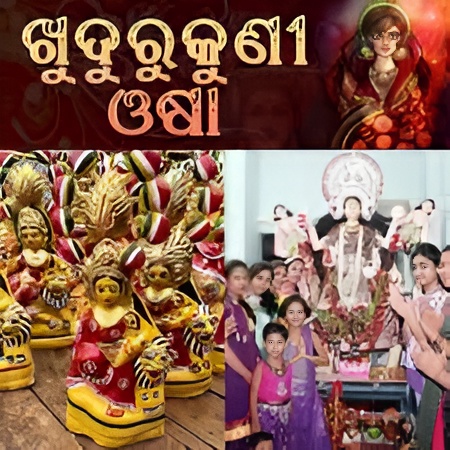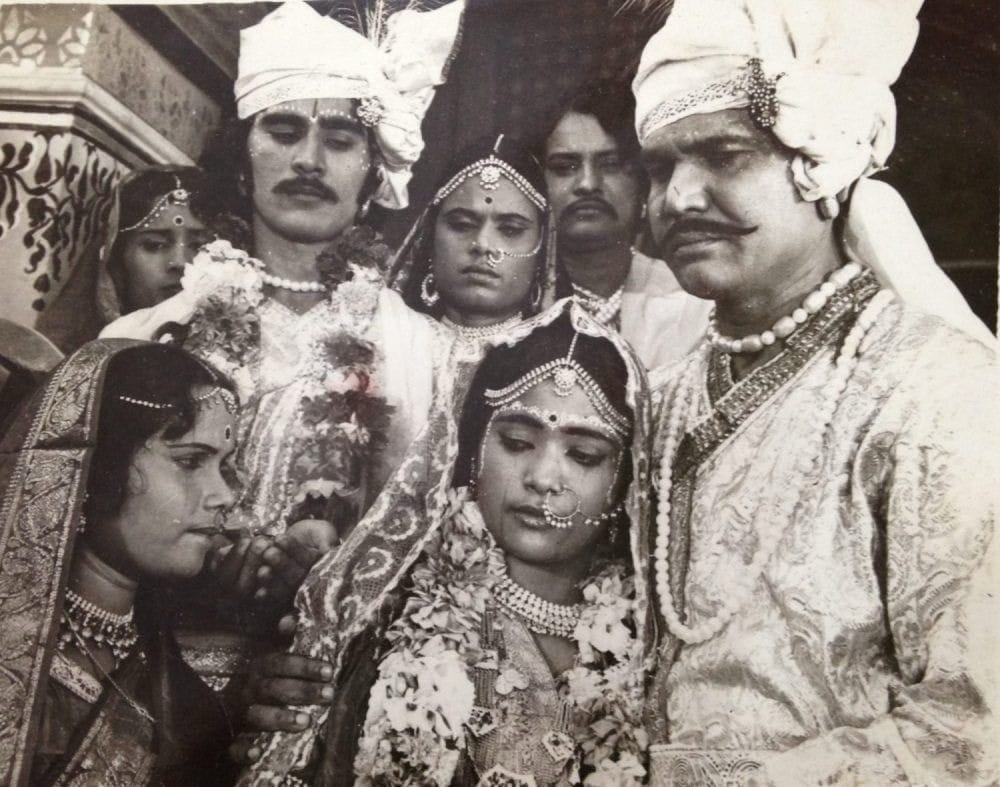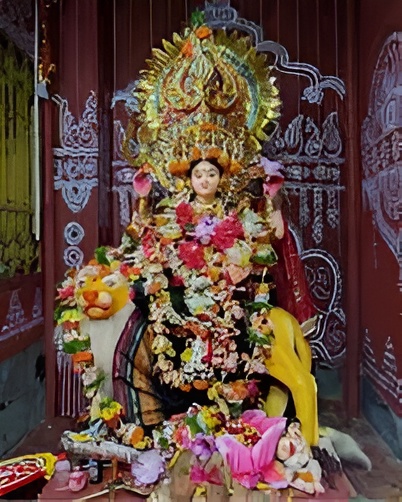From Seafaring Tales to Sacred Rituals: The Cultural Evolution of Odisha’s Maritime Heritage
By Lokanath Mishra
Odisha’s rich maritime history is deeply embedded in its cultural fabric, giving rise to festivals and folktales that celebrate its seafaring past. Two prime examples are the ancient folktale of Tapoi and the festival of Boita Bandana. While both are rooted in the state’s nautical legacy, they demonstrate a fascinating evolution from cultural narratives and social celebrations to events with pronounced religious overtones.

Understanding this distinction is crucial to appreciating their original essence and their modern-day significance.
Tapoi : A Window into the Past, Not a

Historical Record
The story of Tapoi is a cornerstone of Odia folklore, a poignant tale passed down through generations. It’s a narrative of sibling affection, betrayal by jealous sisters-in-law, and ultimate redemption through divine intervention. The story is a central part of the Khudurukuni Osa festival, where young girls sing the tale to honor Goddess Durga and pray for the safe return of their seafaring brothers.

The enduring nature of the Tapoi story lies in its oral tradition, a characteristic hallmark of folklore. It’s not a historical document; rather, it’s a symbolic narrative that reflects the cultural values and anxieties of a society reliant on sea trade. The narrative, with its themes of hardship and faith, served a dual purpose: it was both a source of entertainment and a medium for conveying moral lessons. The story’s connection to a specific ritual, the Khudurukuni Osa, further cements its place as a cultural artifact rather than a historical one.

While the story contains elements of historical reality, such as the voyages of the sadhabas (merchants), these are presented in a fictionalized and allegorical manner. Folklore scholars emphasize that such tales can offer valuable insights into a society’s past, but they are fundamentally distinct from factual historical accounts. Tapoi is a testament to the emotional and social realities of ancient Odia life, not a chronology of its events.

Boita Bandana: A Cultural Celebration Evolving into a Socio-Religious Event:
The festival of Boita Bandana, celebrated on the auspicious day of Kartik Purnima, commemorates Odisha’s glorious maritime history. The name itself, “boita bandana,” translates to “worship of boats,” a nod to the ancient voyages of Odia sailors to distant lands in Southeast Asia. The festival’s original purpose was a social celebration of these ancestors and their prosperous trade ventures.

For centuries, the core of Boita Bandana was the remembrance and veneration of the seafaring past, a celebration of cultural identity and historical connections. The tradition of floating miniature boats, or boitas, made from the cover of banana trees, was a symbolic act—a prayer for the safe return of sailors and a tribute to their prosperity. It was a communal event that fostered a sense of unity and pride, bringing people together to honor their shared heritage.
In recent times, however, Boita Bandana has become increasingly infused with religious significance, transforming into a socio-religious festival. While it is observed on a holy day in the Hindu calendar, its roots are not strictly religious. The focus has shifted for many from a purely cultural commemoration to a ritualistic one. This evolution, while perhaps a reflection of changing social dynamics, obscures the festival’s original, secular purpose. The act of floating miniature boats, once a symbolic gesture, is now seen by many as a religious rite, often performed without a deeper understanding of its historical context.
The transition of such events from cultural to religious can lead to redundant and ecologically harmful practices, such as the large-scale floating of boats in ponds and rivers. This highlights the importance of distinguishing between the historical and the religious elements of these traditions.
A Social Message: Distinguishing Folklore from Faith:
The evolution of Tapoi and Boita Bandana from cultural and historical events to ones with strong religious undertones offers a crucial social message: religious events should not be conducted based upon folklore. Folklore, by its very definition, is a symbolic narrative—a reflection of cultural values, not a set of divine commandments. To treat folklore as a basis for religious practice can lead to a misinterpretation of history and a dilution of the original cultural meaning.

While faith and tradition are important, it is essential to appreciate the origins of our rituals. Boita Bandana is a beautiful tribute to Odisha’s maritime past, a celebration of a historical reality. By remembering its roots as a social and cultural festival, we can continue to honor our ancestors without losing sight of the historical and ecological context. The story of Tapoi should inspire us to reflect on sibling love and perseverance, not to create new religious obligations. Separating folklore from faith allows us to appreciate our heritage for what it truly is: a rich tapestry of stories and traditions that connect us to our past.
